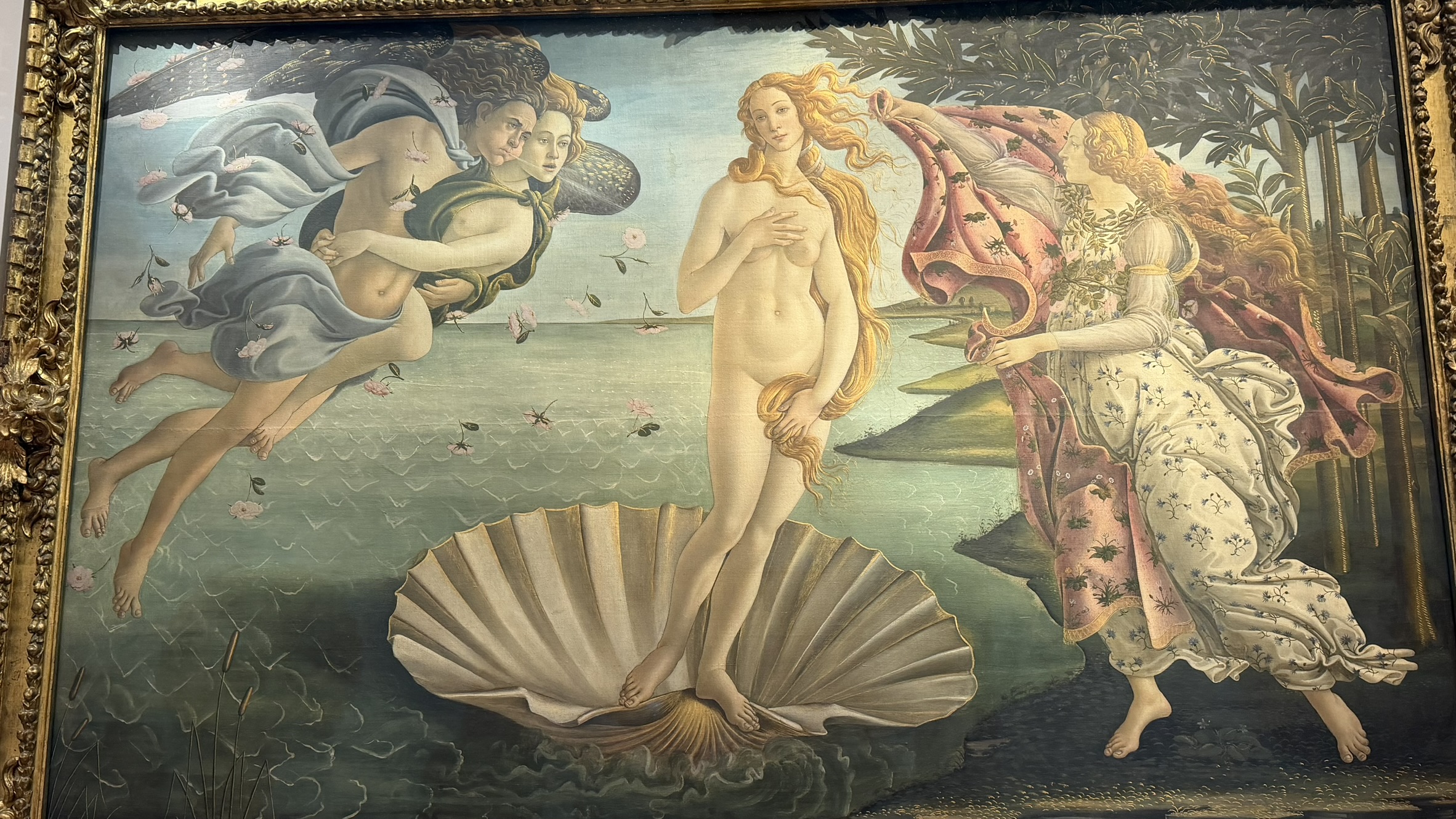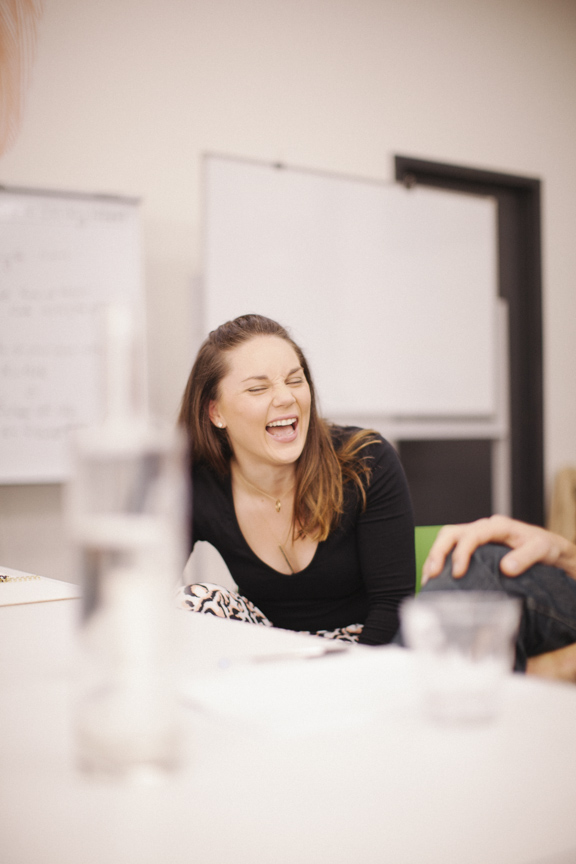
I promised I wouldn’t be that tourist, and then I met Venus.
Greetings from Florence, Italy. I’m in the Uffizi, face to face with Botticelli’s Birth of Venus, and it’s breathtaking. First, the scale hits you, it’s almost three metres wide, a sea of soft light and air. And here’s what grips you next, you’ve walked in mid-scene.
Botticelli paints the moment in between. Not Venus born from sea foam (too weird, lots of explaining needed). Not Venus already on shore, draped and goddess-ready (too boring, story’s over).
He picks the hinge, the middle of the story: she’s being blown toward land, balanced on a shell, hair flying, while a figure on shore lifts a flowered cloak that’s about to cover her.
Something has happened. Something is about to happen. Your brain leans in to close the gap. That tension is why the painting feels alive. You care before anyone explains the myth.
That’s the move presenters should steal. Don’t start at the beginning. ‘Let me give you some background on our Q3 strategy…’ Start at the hinge, where the stakes show and a decision looms: ‘At 9:12 a.m., our system crashed and customers couldn’t access their accounts.’
Now your audience is leaning in. Then loop back with only the context they need.
Art and presenting share a goal: not to show everything, but to make us feel the one thing that matters. Imagine, Botticelli nailed it in 1485.
Now, if you’ll excuse me, I need to elbow my way to a selfie with Venus.

Hooked
Dry facts and data fade from memory over time, but an engaging story is difficult to forget. In Hooked, communication and business storytelling experts Gabrielle Dolan and Yamini Naidu use real-world examples and proven, effective techniques to teach the skill of great business storytelling. They explain what good storytelling is, why business leaders need to learn it, how to create effective stories, and how to practice for perfection.
Recent Posts
You’re special, thank you

My Love Bomb Micro Challenge for you

The weird provocation the internet is melting over

My tough marker Mum gives this an easy 4.5 stars

Sometimes you need to ask, ‘Am I the drama?’

Did you know art and presenting share a unique goal?
Categories
- Books4
- Business storytelling articles37
- Business storytelling examples50
- Business storytelling techniques93
- Business Storytelling training66
- Case Study5
- Communication5
- Conference Speaker10
- Examples of Story66
- Inspiration39
- Interview with…7
- Latest Posts185
- Life hacks5
- Presentation Skills23
- Speaking24
- Technology3
- Thoughts113
- Uncategorized6
- Workshops2
- Writing3
- X Factor15
